Blood Products
Tissues
Cells
Nucleic Acids
Microbiome Samples
Research and Development
Clinical Trials
Personalized Medicine
Regenerative Medicine
Academic Research Institutions
Biotechnology Companies
Pharmaceutical Companies
Government Organizations
Vapor Phase Storage
Liquid Phase Storage
Cryopreservation Storage
North America
Europe
South America
Asia Pacific
Middle East and Africa
North America Outlook (USD Billion, 2019-2035)
North America Biobanking Market by Sample Type
Blood Products
Tissues
Cells
Nucleic Acids
Microbiome Samples
North America Biobanking Market by Application Type
Research and Development
Clinical Trials
Personalized Medicine
Regenerative Medicine
North America Biobanking Market by End Use Type
Academic Research Institutions
Biotechnology Companies
Pharmaceutical Companies
Government Organizations
North America Biobanking Market by Storage Type
Vapor Phase Storage
Liquid Phase Storage
Cryopreservation Storage
North America Biobanking Market by Regional Type
US
Canada
US Outlook (USD Billion, 2019-2035)
US Biobanking Market by Sample Type
Blood Products
Tissues
Cells
Nucleic Acids
Microbiome Samples
US Biobanking Market by Application Type
Research and Development
Clinical Trials
Personalized Medicine
Regenerative Medicine
US Biobanking Market by End Use Type
Academic Research Institutions
Biotechnology Companies
Pharmaceutical Companies
Government Organizations
US Biobanking Market by Storage Type
Vapor Phase Storage
Liquid Phase Storage
Cryopreservation Storage
CANADA Outlook (USD Billion, 2019-2035)
CANADA Biobanking Market by Sample Type
Blood Products
Tissues
Cells
Nucleic Acids
Microbiome Samples
CANADA Biobanking Market by Application Type
Research and Development
Clinical Trials
Personalized Medicine
Regenerative Medicine
CANADA Biobanking Market by End Use Type
Academic Research Institutions
Biotechnology Companies
Pharmaceutical Companies
Government Organizations
CANADA Biobanking Market by Storage Type
Vapor Phase Storage
Liquid Phase Storage
Cryopreservation Storage
Europe Outlook (USD Billion, 2019-2035)
Europe Biobanking Market by Sample Type
Blood Products
Tissues
Cells
Nucleic Acids
Microbiome Samples
Europe Biobanking Market by Application Type
Research and Development
Clinical Trials
Personalized Medicine
Regenerative Medicine
Europe Biobanking Market by End Use Type
Academic Research Institutions
Biotechnology Companies
Pharmaceutical Companies
Government Organizations
Europe Biobanking Market by Storage Type
Vapor Phase Storage
Liquid Phase Storage
Cryopreservation Storage
Europe Biobanking Market by Regional Type
Germany
UK
France
Russia
Italy
Spain
Rest of Europe
GERMANY Outlook (USD Billion, 2019-2035)
GERMANY Biobanking Market by Sample Type
Blood Products
Tissues
Cells
Nucleic Acids
Microbiome Samples
GERMANY Biobanking Market by Application Type
Research and Development
Clinical Trials
Personalized Medicine
Regenerative Medicine
GERMANY Biobanking Market by End Use Type
Academic Research Institutions
Biotechnology Companies
Pharmaceutical Companies
Government Organizations
GERMANY Biobanking Market by Storage Type
Vapor Phase Storage
Liquid Phase Storage
Cryopreservation Storage
UK Outlook (USD Billion, 2019-2035)
UK Biobanking Market by Sample Type
Blood Products
Tissues
Cells
Nucleic Acids
Microbiome Samples
UK Biobanking Market by Application Type
Research and Development
Clinical Trials
Personalized Medicine
Regenerative Medicine
UK Biobanking Market by End Use Type
Academic Research Institutions
Biotechnology Companies
Pharmaceutical Companies
Government Organizations
UK Biobanking Market by Storage Type
Vapor Phase Storage
Liquid Phase Storage
Cryopreservation Storage
FRANCE Outlook (USD Billion, 2019-2035)
FRANCE Biobanking Market by Sample Type
Blood Products
Tissues
Cells
Nucleic Acids
Microbiome Samples
FRANCE Biobanking Market by Application Type
Research and Development
Clinical Trials
Personalized Medicine
Regenerative Medicine
FRANCE Biobanking Market by End Use Type
Academic Research Institutions
Biotechnology Companies
Pharmaceutical Companies
Government Organizations
FRANCE Biobanking Market by Storage Type
Vapor Phase Storage
Liquid Phase Storage
Cryopreservation Storage
RUSSIA Outlook (USD Billion, 2019-2035)
RUSSIA Biobanking Market by Sample Type
Blood Products
Tissues
Cells
Nucleic Acids
Microbiome Samples
RUSSIA Biobanking Market by Application Type
Research and Development
Clinical Trials
Personalized Medicine
Regenerative Medicine
RUSSIA Biobanking Market by End Use Type
Academic Research Institutions
Biotechnology Companies
Pharmaceutical Companies
Government Organizations
RUSSIA Biobanking Market by Storage Type
Vapor Phase Storage
Liquid Phase Storage
Cryopreservation Storage
ITALY Outlook (USD Billion, 2019-2035)
ITALY Biobanking Market by Sample Type
Blood Products
Tissues
Cells
Nucleic Acids
Microbiome Samples
ITALY Biobanking Market by Application Type
Research and Development
Clinical Trials
Personalized Medicine
Regenerative Medicine
ITALY Biobanking Market by End Use Type
Academic Research Institutions
Biotechnology Companies
Pharmaceutical Companies
Government Organizations
ITALY Biobanking Market by Storage Type
Vapor Phase Storage
Liquid Phase Storage
Cryopreservation Storage
SPAIN Outlook (USD Billion, 2019-2035)
SPAIN Biobanking Market by Sample Type
Blood Products
Tissues
Cells
Nucleic Acids
Microbiome Samples
SPAIN Biobanking Market by Application Type
Research and Development
Clinical Trials
Personalized Medicine
Regenerative Medicine
SPAIN Biobanking Market by End Use Type
Academic Research Institutions
Biotechnology Companies
Pharmaceutical Companies
Government Organizations
SPAIN Biobanking Market by Storage Type
Vapor Phase Storage
Liquid Phase Storage
Cryopreservation Storage
REST OF EUROPE Outlook (USD Billion, 2019-2035)
REST OF EUROPE Biobanking Market by Sample Type
Blood Products
Tissues
Cells
Nucleic Acids
Microbiome Samples
REST OF EUROPE Biobanking Market by Application Type
Research and Development
Clinical Trials
Personalized Medicine
Regenerative Medicine
REST OF EUROPE Biobanking Market by End Use Type
Academic Research Institutions
Biotechnology Companies
Pharmaceutical Companies
Government Organizations
REST OF EUROPE Biobanking Market by Storage Type
Vapor Phase Storage
Liquid Phase Storage
Cryopreservation Storage
APAC Outlook (USD Billion, 2019-2035)
APAC Biobanking Market by Sample Type
Blood Products
Tissues
Cells
Nucleic Acids
Microbiome Samples
APAC Biobanking Market by Application Type
Research and Development
Clinical Trials
Personalized Medicine
Regenerative Medicine
APAC Biobanking Market by End Use Type
Academic Research Institutions
Biotechnology Companies
Pharmaceutical Companies
Government Organizations
APAC Biobanking Market by Storage Type
Vapor Phase Storage
Liquid Phase Storage
Cryopreservation Storage
APAC Biobanking Market by Regional Type
China
India
Japan
South Korea
Malaysia
Thailand
Indonesia
Rest of APAC
CHINA Outlook (USD Billion, 2019-2035)
CHINA Biobanking Market by Sample Type
Blood Products
Tissues
Cells
Nucleic Acids
Microbiome Samples
CHINA Biobanking Market by Application Type
Research and Development
Clinical Trials
Personalized Medicine
Regenerative Medicine
CHINA Biobanking Market by End Use Type
Academic Research Institutions
Biotechnology Companies
Pharmaceutical Companies
Government Organizations
CHINA Biobanking Market by Storage Type
Vapor Phase Storage
Liquid Phase Storage
Cryopreservation Storage
INDIA Outlook (USD Billion, 2019-2035)
INDIA Biobanking Market by Sample Type
Blood Products
Tissues
Cells
Nucleic Acids
Microbiome Samples
INDIA Biobanking Market by Application Type
Research and Development
Clinical Trials
Personalized Medicine
Regenerative Medicine
INDIA Biobanking Market by End Use Type
Academic Research Institutions
Biotechnology Companies
Pharmaceutical Companies
Government Organizations
INDIA Biobanking Market by Storage Type
Vapor Phase Storage
Liquid Phase Storage
Cryopreservation Storage
JAPAN Outlook (USD Billion, 2019-2035)
JAPAN Biobanking Market by Sample Type
Blood Products
Tissues
Cells
Nucleic Acids
Microbiome Samples
JAPAN Biobanking Market by Application Type
Research and Development
Clinical Trials
Personalized Medicine
Regenerative Medicine
JAPAN Biobanking Market by End Use Type
Academic Research Institutions
Biotechnology Companies
Pharmaceutical Companies
Government Organizations
JAPAN Biobanking Market by Storage Type
Vapor Phase Storage
Liquid Phase Storage
Cryopreservation Storage
SOUTH KOREA Outlook (USD Billion, 2019-2035)
SOUTH KOREA Biobanking Market by Sample Type
Blood Products
Tissues
Cells
Nucleic Acids
Microbiome Samples
SOUTH KOREA Biobanking Market by Application Type
Research and Development
Clinical Trials
Personalized Medicine
Regenerative Medicine
SOUTH KOREA Biobanking Market by End Use Type
Academic Research Institutions
Biotechnology Companies
Pharmaceutical Companies
Government Organizations
SOUTH KOREA Biobanking Market by Storage Type
Vapor Phase Storage
Liquid Phase Storage
Cryopreservation Storage
MALAYSIA Outlook (USD Billion, 2019-2035)
MALAYSIA Biobanking Market by Sample Type
Blood Products
Tissues
Cells
Nucleic Acids
Microbiome Samples
MALAYSIA Biobanking Market by Application Type
Research and Development
Clinical Trials
Personalized Medicine
Regenerative Medicine
MALAYSIA Biobanking Market by End Use Type
Academic Research Institutions
Biotechnology Companies
Pharmaceutical Companies
Government Organizations
MALAYSIA Biobanking Market by Storage Type
Vapor Phase Storage
Liquid Phase Storage
Cryopreservation Storage
THAILAND Outlook (USD Billion, 2019-2035)
THAILAND Biobanking Market by Sample Type
Blood Products
Tissues
Cells
Nucleic Acids
Microbiome Samples
THAILAND Biobanking Market by Application Type
Research and Development
Clinical Trials
Personalized Medicine
Regenerative Medicine
THAILAND Biobanking Market by End Use Type
Academic Research Institutions
Biotechnology Companies
Pharmaceutical Companies
Government Organizations
THAILAND Biobanking Market by Storage Type
Vapor Phase Storage
Liquid Phase Storage
Cryopreservation Storage
INDONESIA Outlook (USD Billion, 2019-2035)
INDONESIA Biobanking Market by Sample Type
Blood Products
Tissues
Cells
Nucleic Acids
Microbiome Samples
INDONESIA Biobanking Market by Application Type
Research and Development
Clinical Trials
Personalized Medicine
Regenerative Medicine
INDONESIA Biobanking Market by End Use Type
Academic Research Institutions
Biotechnology Companies
Pharmaceutical Companies
Government Organizations
INDONESIA Biobanking Market by Storage Type
Vapor Phase Storage
Liquid Phase Storage
Cryopreservation Storage
REST OF APAC Outlook (USD Billion, 2019-2035)
REST OF APAC Biobanking Market by Sample Type
Blood Products
Tissues
Cells
Nucleic Acids
Microbiome Samples
REST OF APAC Biobanking Market by Application Type
Research and Development
Clinical Trials
Personalized Medicine
Regenerative Medicine
REST OF APAC Biobanking Market by End Use Type
Academic Research Institutions
Biotechnology Companies
Pharmaceutical Companies
Government Organizations
REST OF APAC Biobanking Market by Storage Type
Vapor Phase Storage
Liquid Phase Storage
Cryopreservation Storage
South America Outlook (USD Billion, 2019-2035)
South America Biobanking Market by Sample Type
Blood Products
Tissues
Cells
Nucleic Acids
Microbiome Samples
South America Biobanking Market by Application Type
Research and Development
Clinical Trials
Personalized Medicine
Regenerative Medicine
South America Biobanking Market by End Use Type
Academic Research Institutions
Biotechnology Companies
Pharmaceutical Companies
Government Organizations
South America Biobanking Market by Storage Type
Vapor Phase Storage
Liquid Phase Storage
Cryopreservation Storage
South America Biobanking Market by Regional Type
Brazil
Mexico
Argentina
Rest of South America
BRAZIL Outlook (USD Billion, 2019-2035)
BRAZIL Biobanking Market by Sample Type
Blood Products
Tissues
Cells
Nucleic Acids
Microbiome Samples
BRAZIL Biobanking Market by Application Type
Research and Development
Clinical Trials
Personalized Medicine
Regenerative Medicine
BRAZIL Biobanking Market by End Use Type
Academic Research Institutions
Biotechnology Companies
Pharmaceutical Companies
Government Organizations
BRAZIL Biobanking Market by Storage Type
Vapor Phase Storage
Liquid Phase Storage
Cryopreservation Storage
MEXICO Outlook (USD Billion, 2019-2035)
MEXICO Biobanking Market by Sample Type
Blood Products
Tissues
Cells
Nucleic Acids
Microbiome Samples
MEXICO Biobanking Market by Application Type
Research and Development
Clinical Trials
Personalized Medicine
Regenerative Medicine
MEXICO Biobanking Market by End Use Type
Academic Research Institutions
Biotechnology Companies
Pharmaceutical Companies
Government Organizations
MEXICO Biobanking Market by Storage Type
Vapor Phase Storage
Liquid Phase Storage
Cryopreservation Storage
ARGENTINA Outlook (USD Billion, 2019-2035)
ARGENTINA Biobanking Market by Sample Type
Blood Products
Tissues
Cells
Nucleic Acids
Microbiome Samples
ARGENTINA Biobanking Market by Application Type
Research and Development
Clinical Trials
Personalized Medicine
Regenerative Medicine
ARGENTINA Biobanking Market by End Use Type
Academic Research Institutions
Biotechnology Companies
Pharmaceutical Companies
Government Organizations
ARGENTINA Biobanking Market by Storage Type
Vapor Phase Storage
Liquid Phase Storage
Cryopreservation Storage
REST OF SOUTH AMERICA Outlook (USD Billion, 2019-2035)
REST OF SOUTH AMERICA Biobanking Market by Sample Type
Blood Products
Tissues
Cells
Nucleic Acids
Microbiome Samples
REST OF SOUTH AMERICA Biobanking Market by Application Type
Research and Development
Clinical Trials
Personalized Medicine
Regenerative Medicine
REST OF SOUTH AMERICA Biobanking Market by End Use Type
Academic Research Institutions
Biotechnology Companies
Pharmaceutical Companies
Government Organizations
REST OF SOUTH AMERICA Biobanking Market by Storage Type
Vapor Phase Storage
Liquid Phase Storage
Cryopreservation Storage
MEA Outlook (USD Billion, 2019-2035)
MEA Biobanking Market by Sample Type
Blood Products
Tissues
Cells
Nucleic Acids
Microbiome Samples
MEA Biobanking Market by Application Type
Research and Development
Clinical Trials
Personalized Medicine
Regenerative Medicine
MEA Biobanking Market by End Use Type
Academic Research Institutions
Biotechnology Companies
Pharmaceutical Companies
Government Organizations
MEA Biobanking Market by Storage Type
Vapor Phase Storage
Liquid Phase Storage
Cryopreservation Storage
MEA Biobanking Market by Regional Type
GCC Countries
South Africa
Rest of MEA
GCC COUNTRIES Outlook (USD Billion, 2019-2035)
GCC COUNTRIES Biobanking Market by Sample Type
Blood Products
Tissues
Cells
Nucleic Acids
Microbiome Samples
GCC COUNTRIES Biobanking Market by Application Type
Research and Development
Clinical Trials
Personalized Medicine
Regenerative Medicine
GCC COUNTRIES Biobanking Market by End Use Type
Academic Research Institutions
Biotechnology Companies
Pharmaceutical Companies
Government Organizations
GCC COUNTRIES Biobanking Market by Storage Type
Vapor Phase Storage
Liquid Phase Storage
Cryopreservation Storage
SOUTH AFRICA Outlook (USD Billion, 2019-2035)
SOUTH AFRICA Biobanking Market by Sample Type
Blood Products
Tissues
Cells
Nucleic Acids
Microbiome Samples
SOUTH AFRICA Biobanking Market by Application Type
Research and Development
Clinical Trials
Personalized Medicine
Regenerative Medicine
SOUTH AFRICA Biobanking Market by End Use Type
Academic Research Institutions
Biotechnology Companies
Pharmaceutical Companies
Government Organizations
SOUTH AFRICA Biobanking Market by Storage Type
Vapor Phase Storage
Liquid Phase Storage
Cryopreservation Storage
REST OF MEA Outlook (USD Billion, 2019-2035)
REST OF MEA Biobanking Market by Sample Type
Blood Products
Tissues
Cells
Nucleic Acids
Microbiome Samples
REST OF MEA Biobanking Market by Application Type
Research and Development
Clinical Trials
Personalized Medicine
Regenerative Medicine
REST OF MEA Biobanking Market by End Use Type
Academic Research Institutions
Biotechnology Companies
Pharmaceutical Companies
Government Organizations
REST OF MEA Biobanking Market by Storage Type
Vapor Phase Storage
Liquid Phase Storage
Cryopreservation Storage

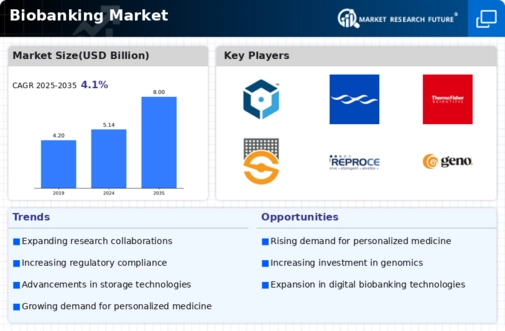
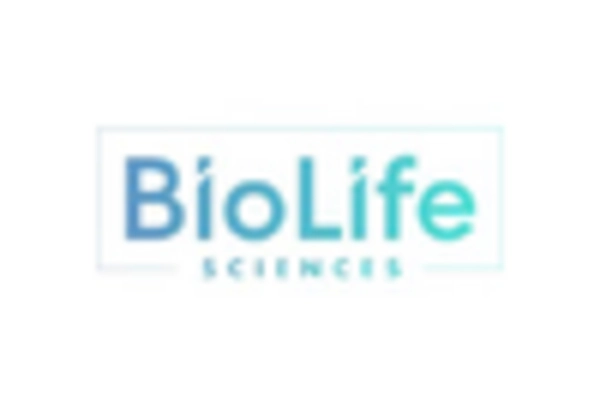
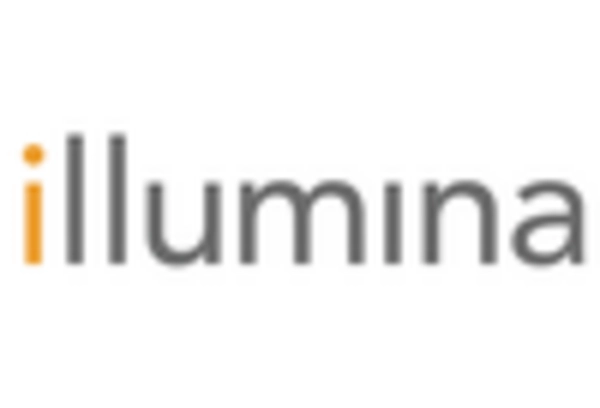

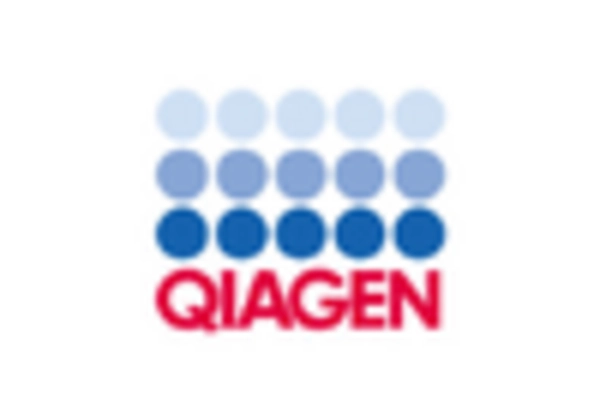
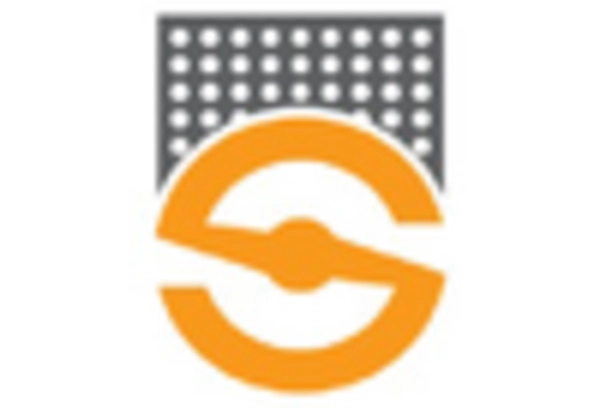










Leave a Comment